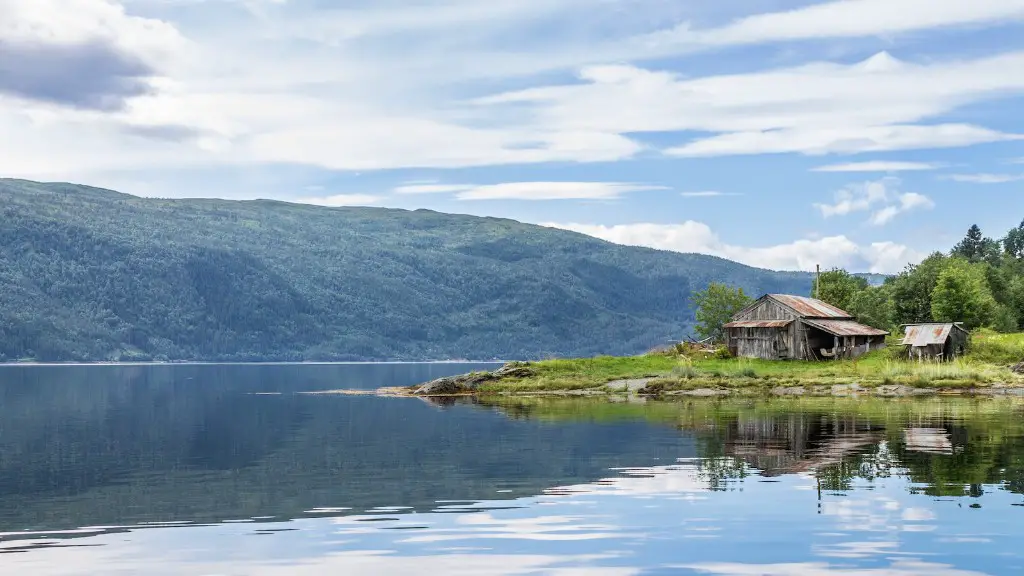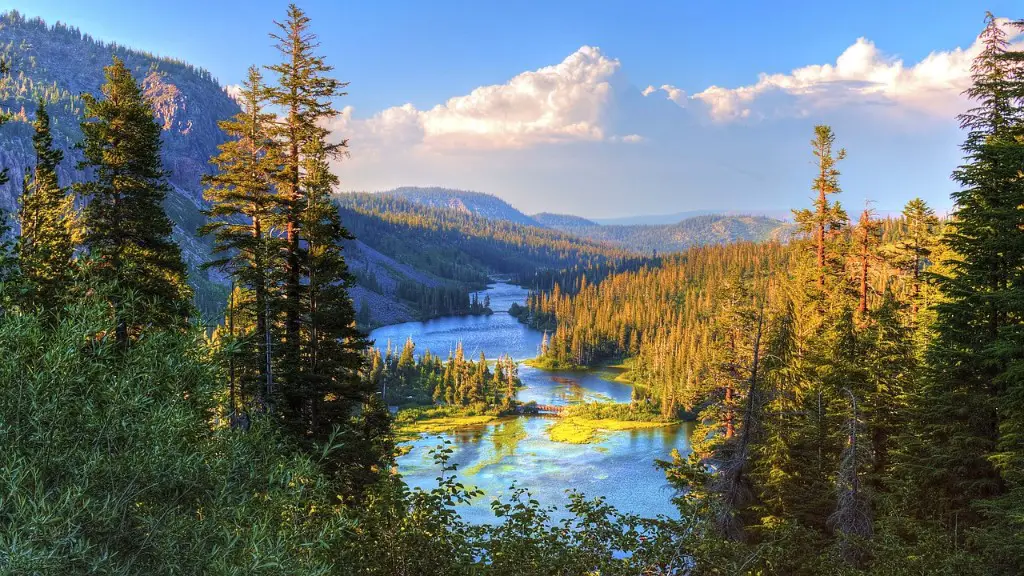The Nile River is the longest river in Africa, and the second longest river in the world. It stretches 4,133 miles from its source in Lake Victoria to its mouth at the Mediterranean Sea. The river is also a major source of hydroelectricity and agriculture, and serves as a lifeline for over 160 million people in 11 countries in Africa. Despite its importance, the Nile River has historically been an unpredictable and dangerous river, subject to both floods and droughts. For thousands of years, the river has been a central part of life in many African countries.
The Nile River is the largest river in Africa, and crucial to the social, economic, and environmental well-being of much of the continent. It is the main source of water for drinking, washing and irrigation—in many cases, it is the only source of water. Additionally, the Nile provides an important transportation route, enabling the movement of goods and people. The Nile is also an important source of renewable energy. Hydroelectric dams and power plants, as well as traditional windmills, are used to generate electricity. Lastly, the Nile River is an important source of natural resources, such as fish and other aquatic life, which are essential to the diet of many African people.
The Nile River has been a source of conflict in the region for centuries. With more than 10 countries sharing its waters, competing interests and limited shares of the water resources put pressure on governance and cooperation between countries. Historically, upstream countries have more control over the river’s resources, often exploiting them at the expense of downstream countries. This has been exacerbated by the degradation of the river and its resources due to overuse, pollution and climate change.
Climate change has become an increasingly serious issue for the Nile River. Prolonged and more frequent droughts, rising temperatures, and diminishing rainfall in the watershed have been exacerbated by the growing population and increasing industrialization. In addition, deforestation and soil erosion along the banks of the Nile have contributed to silt deposits, damming the river and reducing its flow capacity. Furthermore, urbanization and climate disasters have put immense pressures on the river’s resources and its delicate ecosystem.
The Nile River is a source of life, providing water, food, and transportation for millions of people in Africa. It is also a threatened ecosystem, in danger of being exploited and damaged by human activity. The need for sustainable and equitable management of the Nile River is urgent, and requires strong political will, realistic solutions, and support from the international community.
Exploitation of Wildlife
The Nile River is home to a wide variety of wildlife, including over 200 species of fish and up to 50 species of mammals. Unfortunately, much of this wildlife has been threatened by overfishing and other human activity. The river provides an important source of food for millions of people who, in turn, put pressure on fish and other aquatic resources. In addition, pollution from nearby industries, human waste, and sewage have all had an impact on the river’s ecology, and have had damaging effects on a number of aquatic species.
In recent years, conservation efforts have focused on preserving and restoring the river’s ecological balance. In many countries, laws protecting wildlife in the Nile have been strengthened, and initiatives such as reforestation, wastewater management, and revitalization of wetlands have been implemented. There is also a growing focus on sustainable fishing practices, with fishing limits set to protect endangered species.
International Cooperation
In recent years, governments in the Nile Basin have come together to manage the river’s water resources cooperatively. In 2010, the Nile Basin Initiative was established to promote cooperation amongst the 11 countries in the basin. The initiative focuses on developing hydropower, improving irrigation, and conserving the river’s resources. It also sets out to achieve socially, economically and environmentally balanced outcomes.
Additionally, the Nile Basin Discourse was launched in 2011 to ensure transparent and inclusive decision-making process and pave the way for capacity building within the basin. The Discourse is an ongoing dialogue between all parties in the Basin, and has helped to foster cooperation and collaboration between countries. In 2012, the countries ratified the Cooperative Framework Agreement to create a mutually beneficial and equitable management of the Nile’s water resources.
Health Concerns
The Nile River is a vital source of drinking water, but it is increasingly contaminated with toxic pollutants. Pollution from industries, agricultural fertilizers, and human waste has been a source of concern for many years. These pollutants can enter the river from both point sources, such as factory and agricultural runoff, and non-point sources, such as runoff from streets and construction sites. These pollutants can have a devastating effect on human health, and can increase the risk of water-borne diseases.
Governments have set policies and regulations to reduce water pollution. However, without meaningful enforcement and adequate resources to implement these regulations, the water remains at risk. To reduce the health risks posed by water pollution, governments must take a proactive and collaborative approach to protect the river and its resources.
Local Action
In addition to international cooperation, local communities have taken initiatives to protect the Nile River. There have been efforts to promote public awareness of the issues facing the river, as well as initiatives to reduce water usage. Citizens have also partnered with non-governmental organizations to take action on issues such as water pollution, deforestation, and overfishing. In some areas, local leaders have set up cooperatives to manage water resources equitably and protect the river’s resources.
In many areas, traditional fishing practices have been instrumental in preserving the river’s ecology. In some cases, local communities have worked together to establish a sustainable fisheries system, with the aim of conserving fisheries and restoring the river’s ecology. In other cases, communities have established no-fishing zones to protect endangered species and enhance biodiversity.
The future of the Nile River depends on the actions of local communities and governments, as well as international cooperation. Without a collaborative effort and strong commitment to protecting the river, the resources of the Nile and its biodiversity will continue to be threatened.



